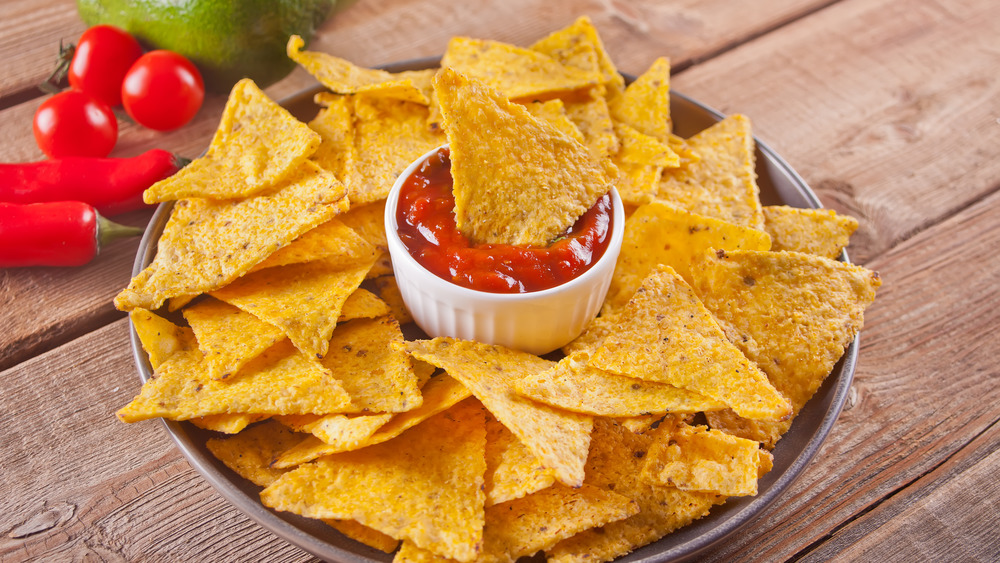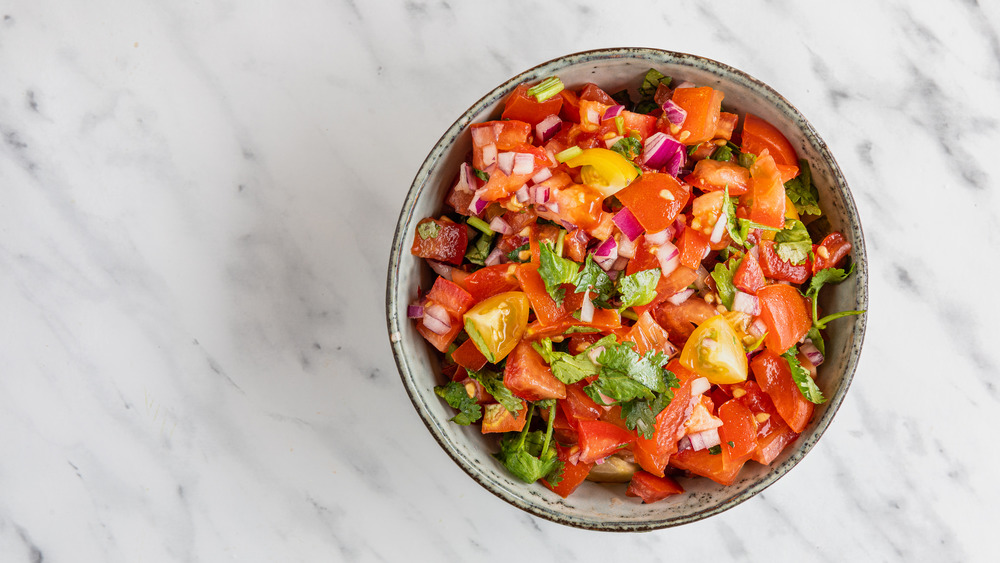What The US Gets Wrong About Mexican Salsa
While you might love chowing down on a burrito or some cheesy enchiladas from your favorite local Mexican restaurant, the United States doesn't do real Mexican food justice. There are some major discrepancies between authentic Mexican food and the American interpretation of the cuisine. Generally, Mexican food tends to be more simple than what Americans are used to, according to Insider. It isn't heavy. The food is straight-forward, but it is often delivered in an elaborate manner, according to Viviana Werner whose family lived in Mexico.
Americans tend to think Mexican food should be spicy, but that isn't exactly the case. Salsa is a great example of this. While the country has roughly 64 varieties of peppers, per the Mazlatán Post, those peppers are used to add depth and flavor to dishes rather than heat. Salsa in the U.S. tends to be labeled from "mild" to "hot," but it is much more complex in Mexico. Not to mention, salsa is completely misrepresented in the United States as opposed to its authentic role with Mexican dishes (via New York Times).
Mexican salsa is a condiment, not a dip
According to Diana Kennedy, a food expert nicknamed the "Julia Child of Mexico," salsa is not a topping, but a condiment (via WFDD). This is the first big mistake that Americans make with salsa. According to the New York Times, an aspiring chef from Oaxaca University, Javier Olmedo, said, watching Americans eat salsa is "like how an American would feel watching someone drink salad dressing out of the bottle." Salsa is not meant to be eaten like a dip, but to be used with restraint and coordination with appropriate dishes to bring out the best flavors.
Salsas highlight various notes of food through its herbaceous flavors from fresh chilies or a sweetness when dried chilies are used. Though most salsa is made with just chilies, tomatoes, onion, and cilantro, salsa can be manipulated by the cooking techniques or preparation methods that are used to get the final result. The salsa can be sweet, smokey, salty, or hot, all of which bring a brightness to the dish. That's why different salsas are often paired with steaks, chorizo, and other kinds of meat — to cut through the richness, per the New York Times.
So, do some homework on salsa and find out which kinds appeal to you most. Then try serving them with classic dishes such as chiltomate with huevos motulenos or salsa de chipotle quemado with meats like goat or lamb (via Taste Atlas).

